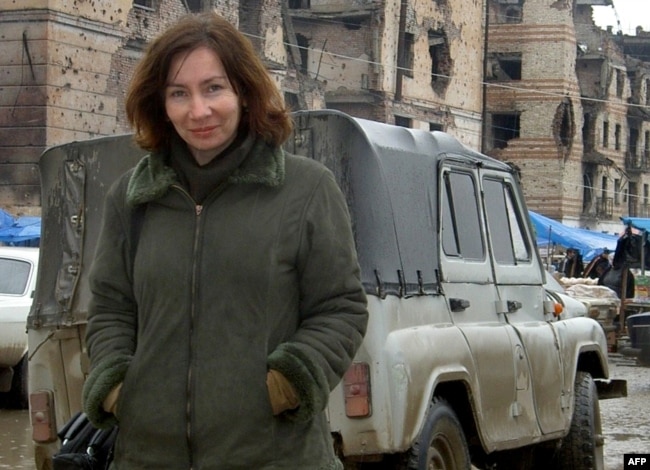Steep Rise in Abductions in Chechnya
Citing his oversight of "an administration involved in disappearances and extrajudicial killings," the U.S. Treasury imposed sanctions on Chechen Republic head Ramzan Kadyrov on December 20 within the framework of the so-called Magnitsky Act of 2012, which provides for sanctions against Russians implicated in serious human rights abuses.
Over the past two years, Russian rights organizations have registered a steady and alarming increase in the number of Chechens -- both men and women -- detained or abducted by security personnel, many of whom subsequently disappeared without trace. In January 2016, Memorial reported that at least 24 people had been apprehended during the previous three months, one of whom had since been found dead.
Two months ago, the news portal Caucasian Knot estimated that no fewer than 43 people had been reported missing by their families in Chechnya since the start of the year. A further seven abductions were reported in late November.
Human rights organizations believe the total figure is far higher, given that relatives of the disappeared might be afraid of incurring Kadyrov's wrath by reporting the abductions to the police and demanding a formal inquiry. Some individuals who have done so appear to have been pressured to withdraw their claims in front of TV cameras and apologize for impugning the security services.
That reluctance, and the obstructions and reprisals experienced by human rights organizations seeking to help victims and their relatives, render it impossible to calculate the precise dimensions of such abuses, Institute of Analysis and Conflict Prevention Director Yekaterina Sokiryanskaya told Caucasian Knot in late October.
Toxic Legacy
Enforced disappearances are part of the toxic legacy of Russia’s two military campaigns in Chechnya in the 1990s. In a briefing paper published in March 2005, Human Rights Watch (HRW) estimated the number of such disappearances between late 1999 and early 2005 at between 3,000 and 5,000, and described the practice as follows:
An enforced disappearance takes place when a person is taken into custody by state agents, and the authorities subsequently deny that the person is in their custody or conceal the victim's whereabouts or fate in a way that places the victim beyond the protection of the law. Often victims of 'disappearances' also suffer torture or execution. Typically those responsible for 'disappearances' will try to avoid being called to account through cover-ups and by spreading misleading information.
HRW further argued that the scale of such disappearances in Chechnya at that time was so widespread or systematic as to meet the definition of a "crime against humanity" enshrined in the UN Declaration On The Protection Of Persons From Forced Disappearances.
Following the killing in 2005 of Chechen resistance commander Aslan Maskhadov, the incidence of enforced disappearances fell sharply. While HRW had documented the disappearance of 44 men between late December 2002 and late February 2003 -- an average of three per week -- Chechen human rights ombudsman Nurdi Nukhazhiyev claimed in 2008 that not a single such incident had been reported during the first four months of the year. (Nukhazhiyev also cited a figure of 4,300 disappearances since the start of the first war in late 1994.)
That is not to say, however, that the practice fell into abeyance: Natalya Estemirova, who represented the Moscow-based human rights watchdog Memorial in Grozny, had been investigating the suspected involvement of Chechen police and security personnel in such disappearances in the days before she was murdered in July 2009.
The new upsurge in enforced disappearances, which Caucasian Knot described as "systematic," differs from that of the early 2000s in two key respects.
First, whereas the overwhelming majority of wartime and postwar disappearances were purportedly the work of the federal forces Moscow dispatched to Chechnya to combat "international terrorism," today the perpetrators are being blamed on the police and security units subordinate to Kadyrov.
And second, whereas the earlier wave was seemingly indiscriminate, over the past two years the security services appear to have been targeting primarily young men suspected of sympathizing with the extremist group Islamic State (IS) but also suspected drug dealers and men believed to be gay.
Memorial and the independent newspaper Novaya Gazeta independently compiled lists of individuals apprehended in the wake of the attacks on police officers in Grozny almost a year ago. A Novaya Gazeta article listing 31 people apprehended, 14 of whom were reportedly summarily executed during the night of January 26-27, generated so much negative publicity that the Kremlin dispatched Russian human rights ombudsman Tatyana Moskalkova to Grozny in September to investigate. She failed to corroborate those reports.
Veteran human rights campaigner Svetlana Gannushkina recently told Caucasian Knot that only the Kremlin can prevail upon the Chechen authorities to put an end to enforced disappearances and similar human rights violations. Whether the sanctions imposed by the U.S. Treasury on Kadyrov will result in such pressure remains to be seen.


Comments